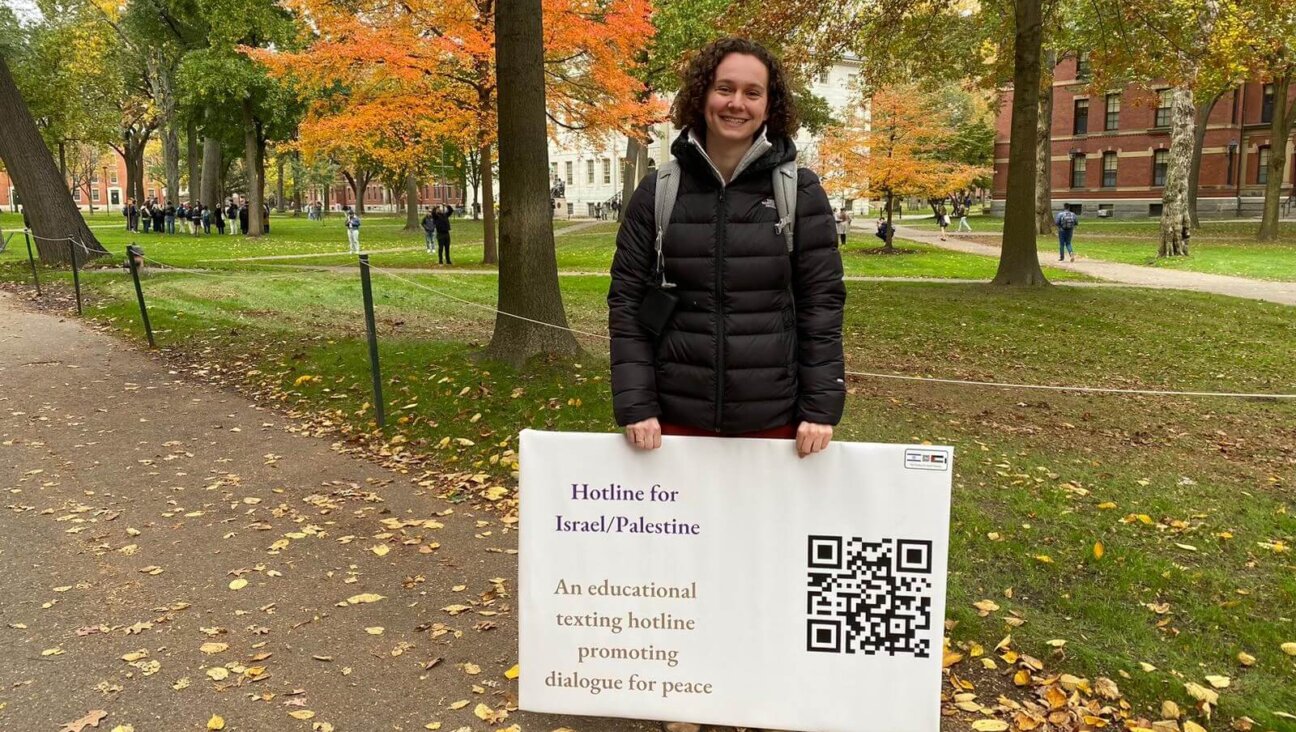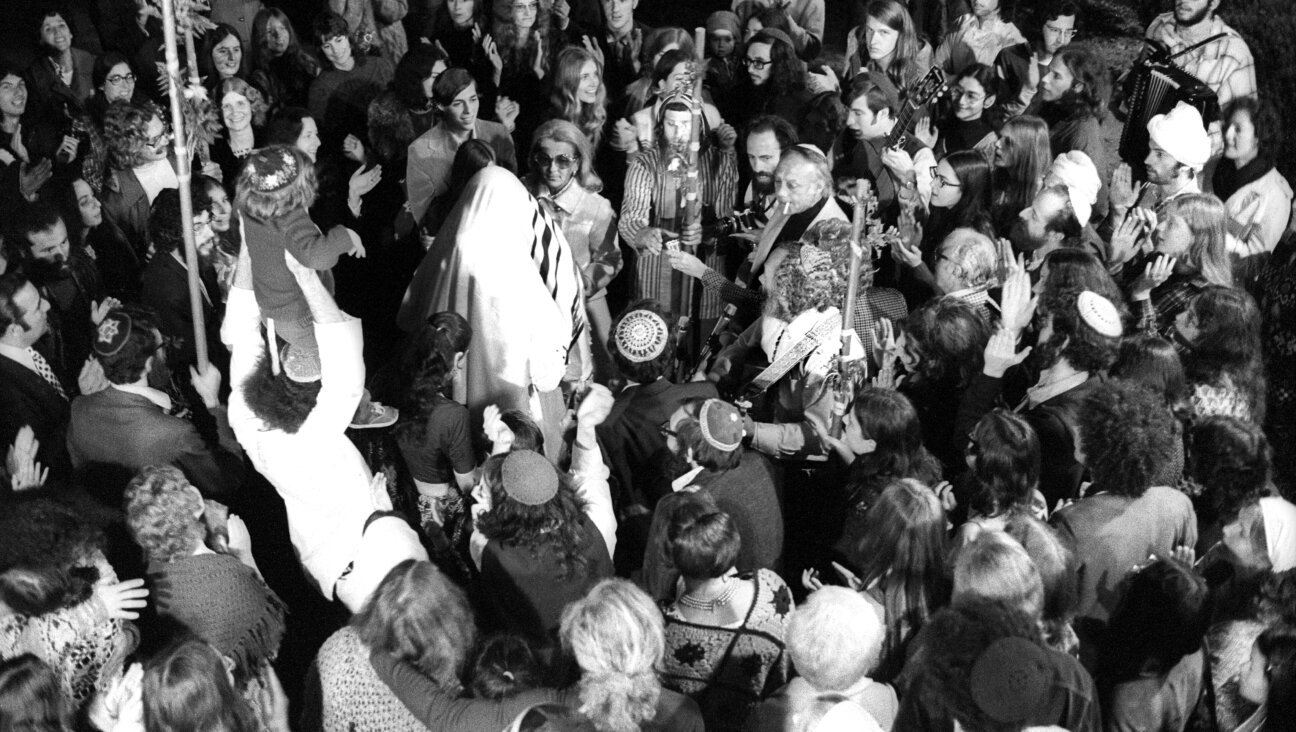Polishing off Your Delicious Ponchkes
Were pa˛czki, *or ponchkes,* a Hanukkah food in Poland? If they were, why didn’t they become one in America, too? And if they weren’t, why did they become one in Israel? With these questions, last week’s column ended.
Let’s start with Question 1. The answer to it is apparently negative. In fact, some of your informants held that *pa˛czki *were never prepared by Jews in Poland at all, perhaps because they were traditionally made with lard. Michael Sweet, for instance, who asked his Polish-born mother-in-law about them, received the reply, “What Jews made jelly doughnuts in Poland?”
Yet, even correspondents who cited evidence that Polish Jews did make and eat a lardless version of *pa˛czki *did not connect them with Hanukkah. Ralph Roskies of Pittsburgh, for example, writes:
“Ponchkes was definitely my father’s word for jelly doughnuts. He grew up in Bialystok, in Poland. As an illustration of the ironies of life, he once told me that when he was young he used to press his nose against the window of Avner der bekkers [“Avner the baker’s,” in Yiddish] shop, salivating over the ponchkes, which his family was too poor to eat. ‘Now that I can afford them,’ he said, ‘I’m not allowed to eat them for health reasons.’ But ponchkes were never associated in our house with Hanukkah. It was only when I lived in Israel that I encountered them in that connection.”
The one reader to link something like ponchkes to Hanukkah was David Berger, whose mother “hailed from Negrovo, a shtetl near Munkatch (Mukachevo),” today in the southwestern tip of Ukraine near the Hungarian and Romanian borders. Mr. Berger’s mother prepared, he writes, “fankes on Hanukkah, fried dough pieces to which we added jam.” But the Hungarian fánk, *of which this seems to have been a simplified version, is a yeast doughnut without a filling, and therefore it cannot be the ancestor of the Israeli *sufganiya.
The Polish ponchke, then, became a Hanukkah food only when it traveled to the Middle East. When did this happen? A letter from Israeli reader David Bannet tells us: “In Jerusalem, among Ashkenazim of the Old Yishuv, I have heard Hanukkah dough balls often referred to as ponchkes.” The term “Old Yishuv” denotes the Orthodox, partly Yiddish-speaking community of Palestine before the first Zionist settlers arrived in the 19th century, and by extension, its still Yiddish-speaking ultra-Orthodox descendants in Israel today.
This would seem to indicate that the custom of eating ponchkes on Hanukkah is quite old. A bit of musicological research confirms this. Some of you may know the popular Hebrew Hanukkah song that begins, “Yemey ha-hanukkah, hanukkat mikdashenu,/Be’gil u’ve’simh.a memal’im et libenu,/Leila ve-yom s’vivoneynu yisov,/Sufganiyot nokhal gam larov — *that is, “O days of Hanukkah, of the dedication of our Temple,/With joy and delight we fill our hearts,/Day and night our dreidel goes round,/Sufganiyot we’ll eat without end.” This is a free translation of an older Yiddish song having the same melody, whose first lines are, *Khanuke o khanuke, a yontif a sheyner,/A lustiker a freylikher, nishto nokh azoyner,/Alle nakht in dreydl shpiln mir,/udik heyse latkes essn mir — *“Hanukkah O Hanukkah, a lovely holiday,/A happy and a merry one, there is nothing like it,/All night we play dreidel,/And eat piping hot latkes.” The translator who substituted Palestinian *sufganiyot *for Eastern European latkes was a Minsk-born scholar and teacher of Hebrew named Avraham Abrunin, and “Yemey ha-hanukkah” *appeared in a volume of his Hebrew children’s songs that was published in the Galilean city of Safed in 1918.
Sufganiyot, *it is thus clear, were already a Hanukkah food in Palestine before World War I, and perhaps considerably earlier than that. Why did they become one there and not in America? To answer this, we have to go back to the first of our three columns on *sufganiyot, *the one that inspired your letters. If you remember, I mentioned in it that North African Jews ate *sfenj *on Hanukkah,* deep-fried doughnuts of the hole-in-the-middle variety.
Quite a few North African Jews, or mugrabim, *as they were known, settled in Palestine in the 19th and early 20th centuries. It stands to reason that when Ashkenazic Jews, came into contact with Hanukkah *sfenj in Jerusalem and elsewhere, they adapted it to the deep-fried, jam-filled doughnuts of Eastern Europe that were called* ponchkes* until some unknown Hebraist connected sfenj, *which means “sponge” in Arabic, with Hebrew *sufgan, *in rabbinic literature a kind of baked or fried dough whose root of *s’fog *means “sponge,” too, and coined the word *sufganiya. *And this also would explain why Polish *pa˛czki *never became a Hanukkah food among Jews in America, where there were no *sfenj-eaters to imitate. I would hazard the guess that this is the solution to our mystery.
Thanks go to all of you whose e-mails helped to solve it, both to those whose names I have mentioned and to Zvi Harrel, Norman Szlajcher, Susan Rogol, Janice Hamer, David Bell, Sarah Zarrow, Jack Warga, Marty Kuper, Elizabeth Ehrlich, Gerry Kane, Toni Soren, Nathan Levin, Anne Hampton, Frank Castronova, Cary Gottlieb, Mark Nowogrodski, Dora Levin, Michael Kaufman, H. Nebenzal, Eli Greenbaum, Regina Tuchmaier Lotven, Norm Green, Michael and Lilian Falk, and any other late stragglers whose thoughts about ponchkes are still on the way.
Questions for Philologos can be sent to [email protected].

I hope you appreciated this article. Before you go, I’d like to ask you to please support the Forward’s award-winning journalism this Passover.
In this age of misinformation, our work is needed like never before. We report on the news that matters most to American Jews, driven by truth, not ideology.
At a time when newsrooms are closing or cutting back, the Forward has removed its paywall. That means for the first time in our 126-year history, Forward journalism is free to everyone, everywhere. With an ongoing war, rising antisemitism, and a flood of disinformation that may affect the upcoming election, we believe that free and open access to Jewish journalism is imperative.
Readers like you make it all possible. Right now, we’re in the middle of our Passover Pledge Drive and we need 500 people to step up and make a gift to sustain our trustworthy, independent journalism.
Make a gift of any size and become a Forward member today. You’ll support our mission to tell the American Jewish story fully and fairly.
— Rachel Fishman Feddersen, Publisher and CEO
Join our mission to tell the Jewish story fully and fairly.
Our Goal: 500 gifts during our Passover Pledge Drive!
























